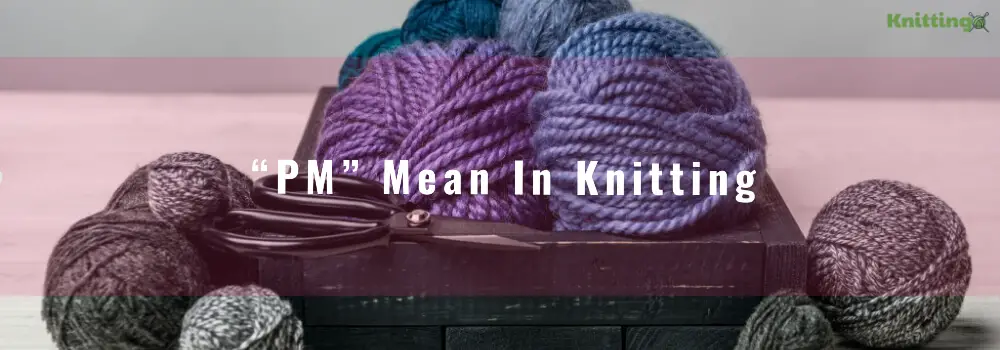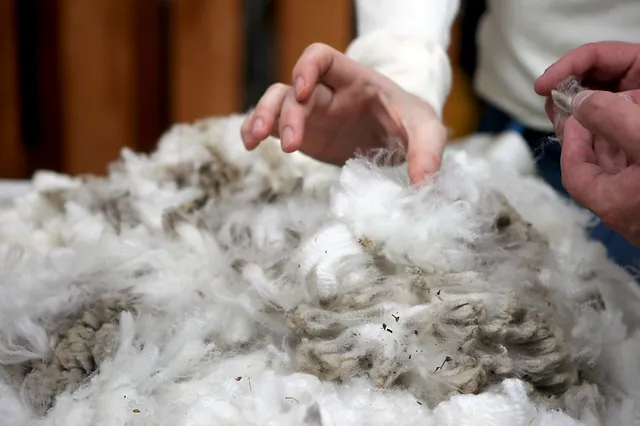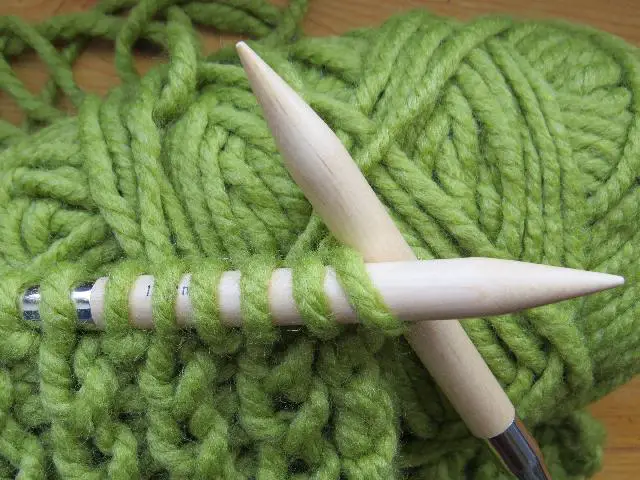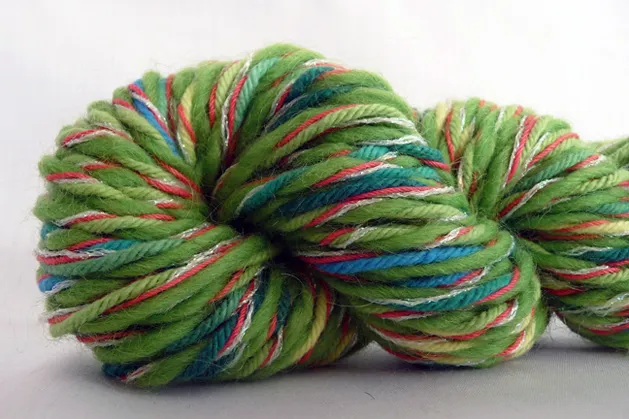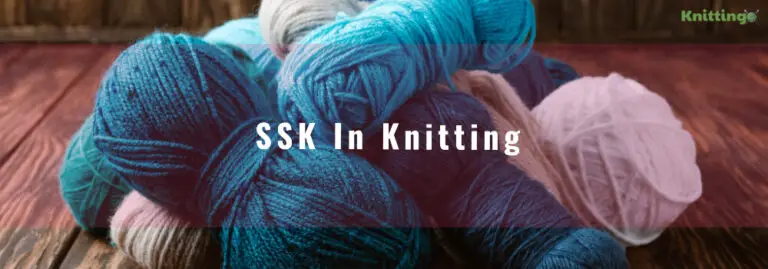PM is an abbreviation that stands for place marker in knitting, meaning that you should place a stitch marker on the right-hand knitting needle after working the last stitch. As you master your knitting skills and techniques, you will definitely encounter this marker on every round or row afterward. Once you’re back around to it, then move the marker from the left-hand needle to the right-hand needle.
These small tools are very important in your knitting education. Stitch markers as useful than you can ever imagine. Today, in this article, we will talk about what stitch markers are, how you can use them, and in many ways they can help your knitting.
| Stitch Marker Types | Uses Of Stitch Markers |
| Locking stitch markers | Knitting in the Round |
| Ring stitch markers | Knitting flat |
| Pattern changes |
What Is A Stitch Marker?
A stitch marker is a knitting tool used to point out a significant place in your knitting. They are usually in fixed forms, or as locking stitch markers, or rings. You can even customize your own stitch markers.
As we work our way through this blog post, we are going to talk about everything in detail. Just have it in your mind that stitch markers are valuable items to have in your knitting kit.
First, let’s talk about the different types of stitch marker available
Stitch Marker Types
There are two main types of stitch markers. They include;
1. Locking Stitch Markers
2. Ring Stitch Markers
For now, let’s look into these two types of markers, beginning with locking stitch markers.
Locking Stitch Markers
Most locking stitch markers are identical to safety pins, while some have lobster claps to clamp on your knitting. Generally, these types of stitch markers are versatile. Some styles can be slipped over your knitting needles, but, normally, they can be attached to your knitting. If you want a marker that can function for all your knitting projects, then try this locking type of marker. If you wish to, you can easily change their positions. However, the ring stitch marker will require you to work to the point in your knitting before you can move them. Another reason why we loved this type of stitch marker is that they will never fall off from your knitting. Whereas, ring stitch marker may drop off your knitting if you stop at the beginning of a round or row. You might not even notice this until much later, which will lead to frustration and thinking. It is advisable to lock in a stitch marker whenever you’re knitting in the round.
Ring Stitch Markers
They usually have either a notched feature to slide on the yarn itself or can come in enclosed design to slip on your needle. Also, stitch markers come in different kinds of geometric colors and shapes. However, the most common geometric shapes of stitch markers are the round stitch markers but they also come in different kinds of shapes. The assortment of styles and colors keeps making things fun and interesting. Furthermore, these stitch markers also come in a range of sizes to suit your knitting needles perfectly and are usually made of plastic, metal, wood, and other sturdy materials.
How To Use Stitch Markers
Whether you’ve lost your place in your knitting patterns or ever lost count of your knitting needles, the knitting stitch markers are the perfect choice for you. Stitch markers can be attached to your knitting and also keep them on the knitting needles. As I said, stitch markers will hell you with your knitting education. So let’s see the variety of ways they can help your knitting.
1.Knitting In The Round
If you want to knit in the round, stitch markers can be of great help. You will make fewer mistakes in circular knitting if you know where the knitting pattern begins and ends. As a beginning knitter that wants to avoid mistakes, it is highly recommended that you use stitch markers to mark the beginning of your work.
2. Flat Knitting
If you’re want to do flat knitting, it is good to use stitch markers to mark the beginning or end of the round or row. Also, if you want to add edge stitches to your work, stitch markers are a perfect choice. They will help you separate your pattern from the knitted border. Furthermore, if you want to mark the wrong side (WS) or right side (RS) of your knotting, or decreases and increases, stitch markers would definitely come in handy. If you’ve cast on a lot of stitches, stitch markers will help you keep the counts of your stitches.
3. Pattern Changes
Stitch markers can also function as the pattern repeats markers in your knitting or modifications in stitch patterns. As a beginning knitter that’s learning how to count rows in knitting, you should make use of stitch markers. You should count your knitting pattern for a certain amount of row repeats. To make things better, you could have the marker on every five or ten rows. Then, all you need to do is count the markers instead of counting each row. If you mistakenly dropped a stitch, stitch markers will help you hold it in place until you rectify your errors. Using stitch markers will help you keep the dropped stitch from unfolding and causing more damage.
Another way in which stitch markers can come handy is by using them to mark where you want to slip a stitch. You can do this within the pattern itself or for the edge stitches. When talking about place markers in knitting, we need to discuss how you can find them written in knitting patterns.
Knitting Abbreviation Properly Explained
Most times, beginning knitters say that understanding some knitting abbreviation seems like reading an unfamiliar language. But to be honest x these knitting terms and abbreviations are simple and easy to understand. To help you understand better, we have provided the things you need to know about stitch markers in knitting patterns.
Place Marker (PM)
In some knitting instructions, you would notice that some knitting patterns will mention place marker, or write it as “PM”. You may want to ask, what does it really mean? Well, when the knitting patterns says this, you need to place a stitch marker on the right-hand needle after working the last stitch. As you master your knitting skills and techniques, you will definitely encounter this marker on every round or row afterward. Once you’re back around to it, then move the marker from the left-hand needle to the right-hand needle.
Slip Marker “SM”
SM is an abbreviation that stands for slip marker in knitting, meaning that you should slip or move the stitch marker from the left needle to the right needle. As you master your knitting skills and techniques, you will definitely encounter these knitting instructions written like this;
K to marker, SM, M1, K to next marker, M1, SM, knit across. You might be asking, how exactly does it correlate with slip marker?
The pattern above can be translated like this;
Knit to marker, slip marker, make-one(increase, not decrease), knit to second marker, make-one (increase, not decrease), slip marker, then knit to end.
DIY Stitch Markers
If you’re a keen knitter, you should have all the knitting supplies for handmade stitch markers. Whether you want to DIY or buy stitch markers, make sure they are stored in marker container or case. Furthermore, as you know stitch markers are small, there is tendency for them to get lost easily. So it is advisable you get plenty of them on hand. You might not tell when you’ll need more.
To get you familiar with some other knitting abbreviations, we have provided a list of the commonly used abbreviations with their meanings. These abbreviations are commonly used by yarn publishers and industrial designers. However, some publishers and designers may utilize unique and uncommon abbreviations in a pattern, which might not be included on our list. Generally, a book’s beginning should contain a definition of special abbreviations. Our definition indicates U.S. knitting terms.
| Abbreviations | Meaning In knitting |
| alt | Means (alternate) |
| approx | Means (approximately) |
| beg | Means (beginning) |
| bet | Means (between) |
| BO | Means (bind off) |
| byo | Means (backward yarn over) |
| CC | Means (contrasting color) |
| cn | Means (cable needle) |
| CO | Means (Cast-on) |
| cont | Means (continue) |
| dec | Means (decrease) |
| dpn | Means (double-pointed needles) |
| foll | Means (follow) |
| inc | Means (increase) |
| k | Means (knit) |
| k1B | Means (knit one stitch in row below) |
| kfb | Means (knit 1 into front and back of a stitch) |
| k2tog | Means (knit two stitches together; single right-slanting decrease) |
| kwise | Means (knitwise) |
| LH | Means (left hand) |
| lp | Means (loop) |
| m | Means (marker) |
| M1 or M1K | Means (Making a stitch knitwise; single knit increase) |
| M1R | Means (Make-one right; single right-slanting knit increase) |
| M1L | Means (Make-one left; single left-slanting knit increase) |
| M1p | Means (Make-one purlwise; single purl increase) |
| M1rp | make one right purlwise; single right-leaning purl increase |
| RH | Means (Right-hand) |
| M1lp | Means (Make-one left purlwise; single left-slanting purl increase) |
| MC | Means (main color) |
| p | Means (purl) |
| Part or pat | Means (pattern) |
Conclusion
We have arrived at the final session of this article. We hope you find resources in your quest to know about place markers, stitch markers, and some other abbreviations in knitting.

